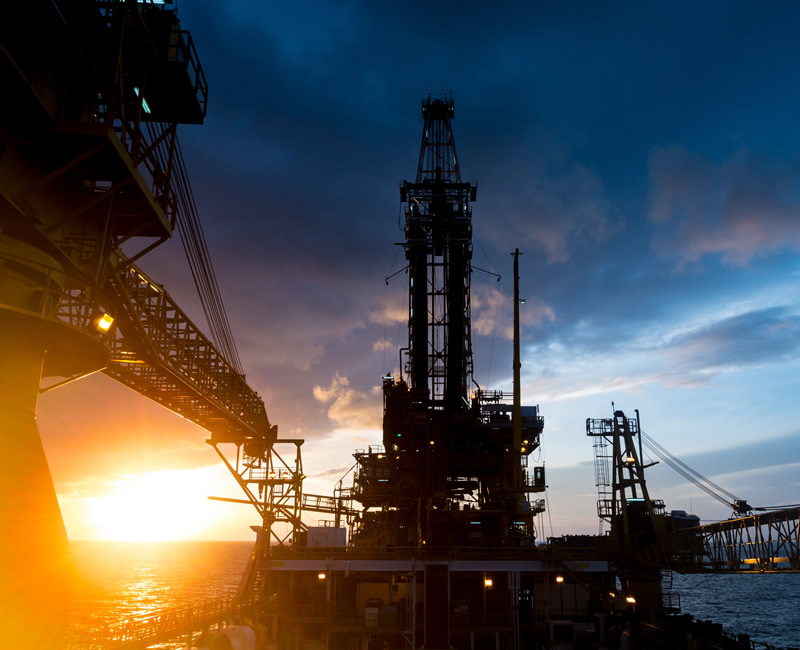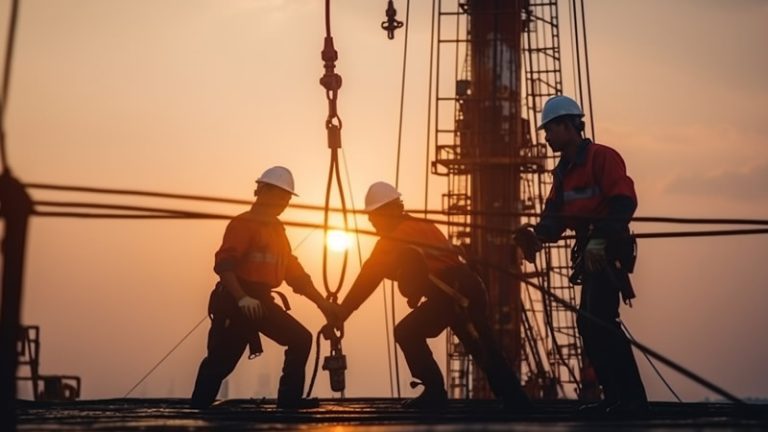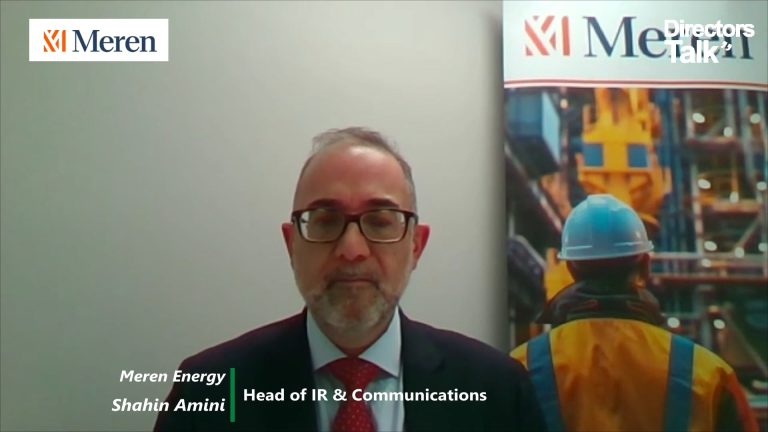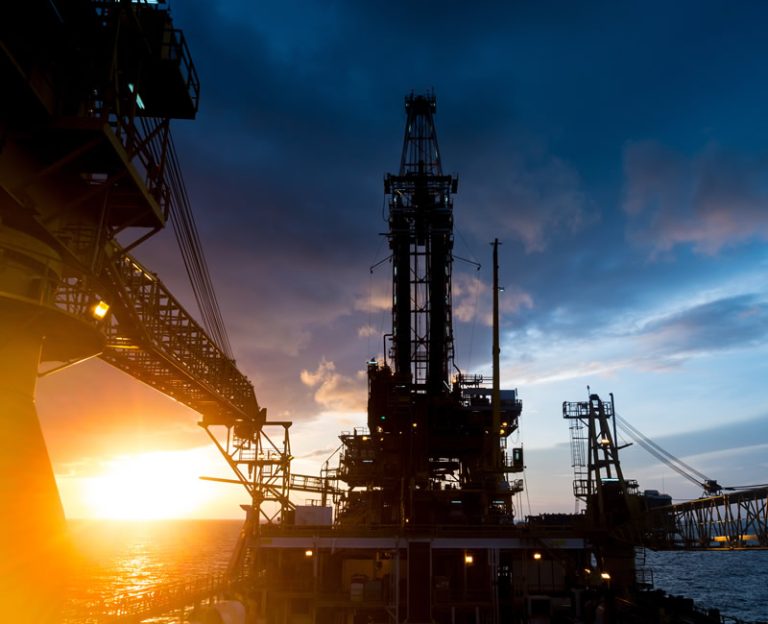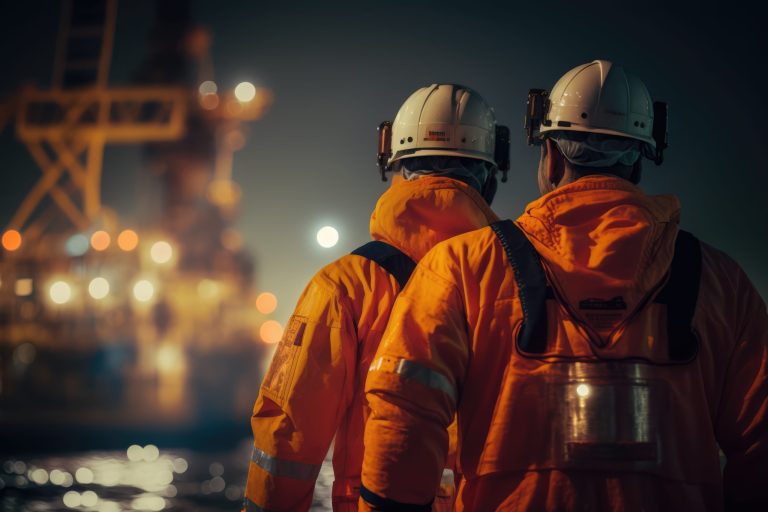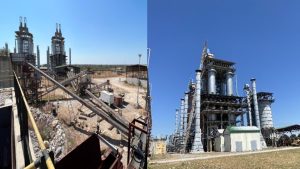Meren Energy (TSE:MER) Head of Investor Relations and Communications Shahin Amini caught up with DirectorsTalk to discuss the recent rebranding, transformational asset deal, production strategy and dividend policy.
Q1: Shahin, could you just give us an introduction to the company and explain the reasoning behind the rebrand?
A1: Until about a couple of months ago we went by the name Africa Oil, and the name change to Meren Energy came about following the completion of a transformational deal that doubled our reserves and production.
This deal involved the consolidation of the full ownership of a joint venture company called Prime Oil and Gas that has interests in deep water assets offshore Nigeria. We originally acquired a 50% interest in Prime back in January 2020 through a transaction that turned out to be a great investment for the company and for our shareholders. It was strategically compelling for us to take 100% ownership of Prime in order to take full control of its decision making, take control of its strong balance sheet and cash flows.
The deal completed in March of this year and it felt the right time to mark this transformational milestone by setting a full stop for both Africa Oil and Prime and roll out a new corporate identity.
The beating heart of the company is your Nigerian assets; these account for all of our reserves and production.We had an end of 2024 2P reserves base of 102 million barrels of oil equivalent and our last reported production is 38,000 barrels of oil equivalent per day.
Other than Nigeria, we have a leading independent position in the Orange Basin offshore Namibia and South Africa, with an effective interest in the world-class Venus oil development project and follow-on exploration opportunities with multiple catalysts for the next couple of years.
We are also present in Equatorial Guinea where we operate two exploration blocks with large oil and gas prospects already identified.
At Meren, we remain very much focused on shareholder returns and I’m proud that since our first dividend payments in 2022, we have returned US $220 million through a combination of base dividend distributions and share buybacks.
Notably, following the completion of the Prime deal, we have tripled our annual dividend payout from US $0.05 per share to US $0.15 per share with a current implied dividend yield of 12%.
Q2: Now, all of your reserves and production are from your Nigerian assets. Why invest so much in this country?
A2: Well, first of all, it’s about the quality of the rocks and Nigeria is a very attractive country for its oil and gas resources. Our production is from large-scale, long-life, and high-quality reservoirs with low lifting costs.
Nigeria also offers a very attractive fiscal regime; it’s the only jurisdiction I know of where the government has lowered tax rates for deep-water projects in order to attract investments, and our headline tax has gone down from 50% to 30%.
We’re also seeing a much quicker and more streamlined regulatory process in the country for the approval of new projects and transactions.
I should also add that all of our assets in Nigeria are in deep water, more than 100 kilometres offshore, so we don’t have the challenges that the industry in Nigeria faces with on onshore operations or in shallow water.
Q3: Could you elaborate on your comment regarding your high-netback production?
A3: There are three key components underpinning our high netback productions, two of these I’ve already mentioned.
So, one, attractive fiscal terms; two, low-cost production, our last reported lifting cost was around US $12 per barrel; and three, premium-grade pricing and we have the flexibility to lift and market our entitlement barrels, and we are targeting international markets. So, we’re not at the mercy of just one single market.
I should also add that our fields are operated by super-majors. This underscores the quality of these assets. Not only are these core to our portfolio, they’re also material to our partners, Chevron and TotalEnergies.
Our producing assets are midlife assets with the bulk of capital investment behind us with a cashflow from operations significantly greater than the required ongoing capital investments.
So, we do have the benefit of predicable production, predictable cashflow from high quality assets operated by top tier companies.
Q4: How does your Nigerian production support the company’s ability to fund dividends and your work programme at the same time?
A4: As I’ve already stated, our cash flow from operations is materially greater than our ongoing capital investment requirements for our assets in Nigeria. In addition to our producing assets, we also have attractive short-cycle investment opportunities in our Nigerian portfolio. These include infill wells and the development of discoveries that are candidates to be subsea tiebacks to our existing platforms.
This will support longer term production profiles and these are again, expected to be funded from cash flow from operations. This will support future free cash flow with the scope for us to manage our balance sheet and support our shareholder return plans.
Q5: What’s the outlook for your Orange Basin assets and what can shareholders expect in the next couple of years there?
A5: We have two tracks, offshore in Namibia and South Africa in the Orange Basin. First, we have the Venus development project, and this is progressing towards Final Investment Decision, which is expected during the first half of 2026, with first oil production possible in 2029.
The second track is the ongoing exploration, and we expect the drilling of at least two high-impact exploration wells, that is planned in the next 12–18 months.
The important point here is that all these activities; the development and exploration, are funded through industry deals that we completed last year whereby we’ve captured the undeveloped resources, the tremendous exploration upside without the upfront cost or without straining our balance sheet.
So, this does give us a stable basis to pursue these opportunities in the future.
Q6: You mentioned earlier that you’d tripled the dividend, you’re now paying a side dividend with a yield of circa 12%. Why is that so important?
A6: Very simply, it’s about giving back to our shareholders and also very importantly, it’s about capital discipline as work towards delivering further growth.
We’re confident that we can continue to deliver our base dividend policy and that is currently targeting an annual distribution of US $100 million. Of course, we will seek to go above and beyond this by growing the business.
However, all of business decisions must be focussed on delivering a sustainable total shareholder return business model. I think one of the big attractions of investing in Meren is that you have a very good balance between delivering growth opportunities whilst returning capital to shareholders.
Q7: Could you in one sentence summarise what makes Meren Energy a compelling investment opportunity?
A7: We are working very hard to deliver a differentiated story that is supported by production and cash flows from genuinely world-class assets that are operated by super-majors. We have presented a transparent capital allocation framework that is focused on delivering meaningful shareholder returns, and we have funded growth opportunities with multiple catalysts expected during the next two years.


